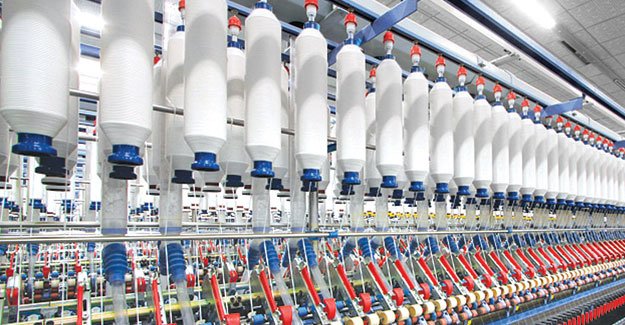This article is written by Shivani Garg, pursuing a Diploma in Business Laws for In House Counsels from LawSikho.
Table of Contents
Introduction
There are few sights more pleasant to the eye than a wide cotton field when it is in a bloom. It presents an appearance of purity, like an immaculate expanse of light, new-fallen snow. – Solomon Northup
With the long-standing history in the cotton industry, India happens to be the largest producer of cotton in the world with the production of around 6.42 million metric tons in the year 2019 -2020 as per the global static data still there is no denial to the fact that the production is not enough for the local consumers. As a result of that despite being the world’s second largest producers, India still needs to import cotton in bulk. Before I tell you more about the cotton industry, GDP, and more, let me walk you through a little bit about how things go around with cotton and what are the terms along with their relevance, especially for the ones who are alien to the textile industry.
The natural fibre like cotton is an extraordinary gift of nature in India. Cotton is also known as the white gold as well as an industrial crop. Cotton happens to be one of the only three commodities apart from rice and wheat, which is procured in large commodities and on a regular basis by the government machinery. The main imports of cotton fibre are mainly done from the United States, Brazil and Egypt. Rain plays the most important role in the production of the cotton crop. The major cotton producers in India are Gujarat, Maharashtra, Telangana, Andhra Pradesh, Karnataka, Madhya Pradesh, Haryana, Rajasthan, and Punjab.
Role of cotton exports for India’s GDP
For centuries, cotton goes by the name of white gold as it has been a critical cash crop for our country. India happens to be the No. 1 producer of cotton in the world today and No.3 in export after the US and Brazil. Cotton plays a crucial role in the Indian economy as the country’s textile industry is predominantly cotton based. So, it won’t be any surprise to know that the Indian textile industry contributes around 5% to a country’s GDP, 14% to industrial production and 11% to the total export earnings. As per the trade sources, Indian cotton exports are likely to hit 60-65 lakh bales for 2020-21 season which is very good for the GDP of India.
Importance of cotton branding to increase exports
India has launched its first cotton national brand ‘Kasturi’, launched on 2nd World Cotton Day by the Ministry of Textiles which will help manufacturers and exporters of India to get better price realization for their products in the international markets as stated by Confederation of Indian Textile Industry (CITI). This will further enable the Indian cotton value chain to improve quality and make it best in the world. The deal will Indian exporters without branding is that they fail to get better prices on the cotton products due to poor quality, unawareness and sometimes contaminated cotton which doesn’t meet the global arena so far. India is now looking for more sustainability this season.
What initiatives are being taken for this
In the current ongoing scenario, there is a huge challenge for all the stakeholders that are in the cotton value chain to ensure that domestic demand is fully met along with the genuine export in surplus is created. With such goals and targets set, there are few things that will be seen in coming times.
- Infusion of multiple technologies for Indian cotton in order to leverage the record area under cultivation.
- Adoption of information technology, satellite technology, agricultural biotechnology, nanotech can be helpful in providing quality as well as improved farm productivity.
- Increased digitization of the supply chain in which automation, robotics, artificial intelligence, block-chain tech for export-import trade, will receive a boost.
- Laws have been enacted to promote contract farming.
Hopefully, Indian cotton and cotton-based products will stand out in the global market.
What is CCI
CCI is the abbreviation for the term Cotton Corporation of India which was established in 1970 under the administrative control of Ministry of Textiles, Government of India as a Public Sector Undertaking under the Companies Act 1956[1]. CCI plays a very crucial role that one might not even know about, which is to undertake price support operations, whenever the market prices fall below the minimum support prices, which is the MSP of kapas that are announced by GOI, without any quantitative limit. So, how does CCI and cotton textile work all link up?
Well, CCI got its own process of cotton procurement. The process of cotton procurement involves farmers registering online for sale of their cotton to CCI on their website www.cotcorp.org.in where they are issued with a token number along with a particular date to come to the procurement centre after getting registered. This way, farmers get the best price for their cotton crop and they don’t have to sell it at a cheap price to private traders.
But this time the story turned out to be a bit opposite, which made millers and traders to corner CCI while buying cotton, which happens to be the huge drawback for farmers and merit for traders and millers as the farmers were denied the MSP by the latter.
What were the problems that arose during the last procurement cycle
Surprisingly, the savior turned out to be the ultimate destroyer in its last procurement.
- Due to COVID-19 lockdown, the procurement of cotton began very late all over India.
- Farmers actually waited for weeks to get the date for their procurement, but they were empty handed at the end as CCI actually did not give them the date. The result was that farmers actually faced huge losses in the month of May. The reason for the loss was that private cotton traders took undue advantage of the situation and offered very low prices. Also, rain devastation too played its part well.
- Farmers were compelled to sell their product at a meagre Rs 2,000 to Rs 2,500 per quintal as against the MSP of Rs 5,825 per quintal[2].
- All the reasons mentioned above led to the problem of money for farmers to buy seeds, fertilizers and pesticides for their next harvest. Not only that, farmers were not even able to get profit in the international market either.
- If there was something left in all these, that was the price of cotton seeds, which dropped drastically from Rs 3500 per quintal to Rs 1700 per quintal.[3]
In the middle of such a huge crisis, desperation among farmers not only increased, but they also started losing their hope in the CCI body, so the government needed to step in to take the matter into hands to regain the trust while giving farmers hope and putting a stop on the growing greed of private traders.
What measures are being taken to avoid this
- The price of cotton bales increased by Rs 3100-3400 in the month of October to recover the last mishap.
- As the demands were made to CCI for commencement of procurement immediately to make sure cotton growers get remunerative prices. With the demands made and looking at the situations, for the first time ever, the first Kapas purchase did start way too early in November to give farmers a relief and amend the mistakes of the last procurement cycle which was around May, 2020.
- The minimum support price (MSP) of cotton has been raised by 30% in the current year by the government.[4]
- Apart from that, two bills have been brought in by the Centre to deregulate essential commodities’ trade, and further, introduce a central law that would enable farmers to sell their produce whenever they like. These bills are very much in favor of farmers as there is the possibility of giving a legal-backing to the minimum support price-based procurement system.
It can be seen that the government and CCI are trying hard to avoid the unfortunate events that have already happened and further making sure that nothing like that happens even in the worst of times.
Conclusion
As we can see, the Cotton Corporation of India plays a vital role not just in the lives of farmers, traders but it also impacts the GDP of the country as a whole. Any shift in the procurement cycle directly impacts the rural economy. If the government goes cold feet in situations like these, the major sector in our country pays the price in one way or the other. Let’s not forget the greed of the traders and millers which doesn’t set aside when they see the circumstances in their favor to dig their pockets deep, forgetting all the senses with that. This season there is a huge drop from the MSP as the traders literally cornered CCI while buying crops from the farmers. COVID-19 situation has not impacted the cotton, locally, but even at the international level too as it has shown recession. We could actually see that with the price of cotton declined the textile industry w.r.t. cotton showed hiked in prices too. Although, there have been many ups and downs in this very year, even then by the end we can see the huge benefit coming on the way as CCI has already purchased seed cotton which is known as Kapas about 1,28,743 bales till now. The latest textile ministry data suggest the break of records till now as the CCI hit more than 10.46 million bales.
References
[1] www.cotcorp.org.in
[2] Article: Greedy traders exploiting cotton growers: CPI, THE HINDU
[3] www.firstpost.com
[4] www.financialexpress.com
Students of Lawsikho courses regularly produce writing assignments and work on practical exercises as a part of their coursework and develop themselves in real-life practical skill.
LawSikho has created a telegram group for exchanging legal knowledge, referrals and various opportunities. You can click on this link and join:
 Serato DJ Crack 2025Serato DJ PRO Crack
Serato DJ Crack 2025Serato DJ PRO Crack











 Allow notifications
Allow notifications



